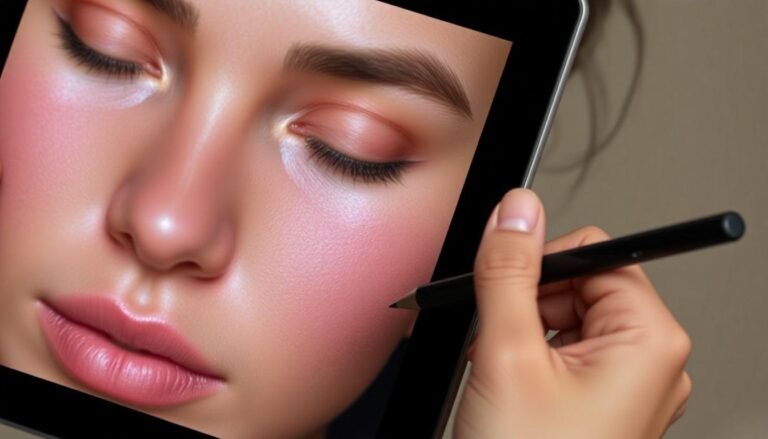Digital art has transformed the way we express our creativity, and Ibis Paint X stands out as one of the most versatile drawing apps available. Whether you’re a beginner or an experienced digital artist, mastering the right brush settings can significantly elevate your artwork, especially when it comes to creating lifelike skin tones. In this article, we’ll explore how to master Ibis Paint brush code for perfect skin coloring technique, breaking down the process into simple, actionable steps that will help you achieve that professional finish you’ve been dreaming of.
Understanding Ibis Paint Brush Codes Basics
Brush codes in Ibis Paint X are essentially saved settings that determine how your brush behaves while drawing. Think of them as recipes – each ingredient (setting) contributes to the final result. When coloring skin, these settings become particularly important as they affect texture, blending, and overall realism.
The beauty of Ibis Paint is that you can save your customized brushes for future use. This means once you’ve found that perfect brush for skin coloring, you can use it repeatedly without having to recreate the settings from scratch.
Essential Brush Parameters for Skin Coloring
Before diving into specific techniques, let’s understand the key parameters that affect how your brush works for skin coloring:
For skin coloring, a combination of soft brushes with variable opacity often yields the most natural results. You’ll want brushes that allow for gentle blending while still maintaining some texture to mimic the natural look of skin.
Creating the Perfect Base Skin Brush
Let’s start by setting up a brush specifically for laying down base skin tones. This is your foundation brush – it needs to provide smooth coverage while allowing for easy blending.
In Ibis Paint, open the brush menu and select the “Round” brush as your starting point. Then adjust these settings:
Once you’ve customized these settings, save this brush with a memorable name like “Skin Base.” This will be your go-to for laying down initial skin tones.
The Blending Brush Setup
After establishing your base colors, blending is where the magic happens. A good blending brush makes transitions between different skin tones appear seamless and natural.
Start with the “Blur” or “Blend” brush and modify:
Save this as your “Skin Blend” brush. The low opacity and flow settings allow you to build up the effect gradually, preventing harsh transitions that can make skin look artificial.
Advanced Techniques for Realistic Skin Texture
Real skin isn’t perfectly smooth – it has pores, slight variations in color, and subtle textures. To replicate this in Ibis Paint:
Create a texture brush by starting with the “Dot” brush and adjusting:
This brush creates tiny dots that, when applied over your base skin color, mimic the natural texture of pores and slight imperfections that make skin look realistic rather than plastic-like.
Working with Layering for Depth
The secret to truly realistic skin lies in layering. Professional artists rarely color skin with just one or two layers. Instead, they build up multiple semi-transparent layers that create depth and dimension.
Here’s an effective layering approach:
1. Base skin tone layer (use your “Skin Base” brush)
2. Shadow layer (set to Multiply blending mode, 30-50% opacity)
3. Highlight layer (set to Soft Light or Overlay, 20-40% opacity)
4. Texture layer (use your texture brush at very low opacity)
5. Blush/color variation layer (adds life to cheeks, nose, ears)
Each layer should be blended into the others using your blending brush, creating subtle transitions rather than stark lines.
Color Selection Tips for Natural-Looking Skin
Even the perfect brush won’t save poorly chosen colors. When selecting skin tones:
A common mistake is using colors that are too saturated. Natural skin tones tend to be more muted than you might initially select. When in doubt, reduce the saturation slightly for more realistic results.
Troubleshooting Common Skin Coloring Issues
If you’re facing challenges with your skin coloring technique, check these common problems:
Muddy Colors
This usually happens from overblending or using too many colors at once. Solution: Work with a limited palette and blend in small, controlled motions rather than large sweeping ones.
Unnatural Texture
If your skin looks too smooth or too rough, adjust your texture brush settings. Remember that different parts of the face have different textures – forehead tends to be smoother than cheeks, for example.
Harsh Transitions
These occur when blending isn’t sufficient. Solution: Create a separate layer just for blending, use a very soft brush at low opacity, and work in circular motions over transition areas.
Conclusion
Perfecting your skin coloring technique in Ibis Paint X is a journey that combines technical knowledge with artistic intuition. By understanding brush settings, creating custom brushes for specific purposes, and approaching skin with a layered mindset, you’ll see dramatic improvements in your digital portraits. Remember that practice is essential – even the most advanced Ibis Paint brush code for perfect skin coloring technique requires time and patience to master. Save your successful brush settings, study real skin in different lighting conditions, and don’t be afraid to experiment with different approaches to find what works best for your unique style.







